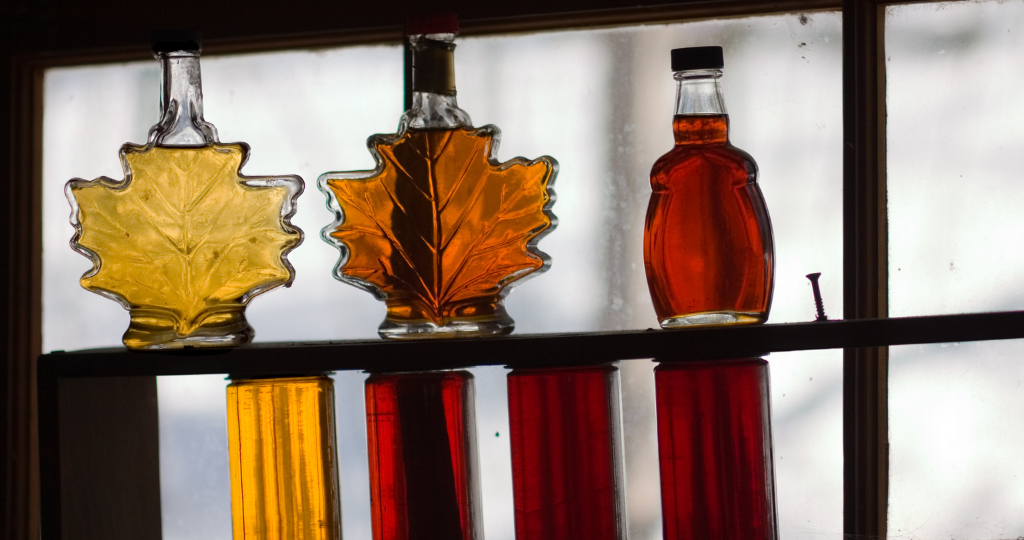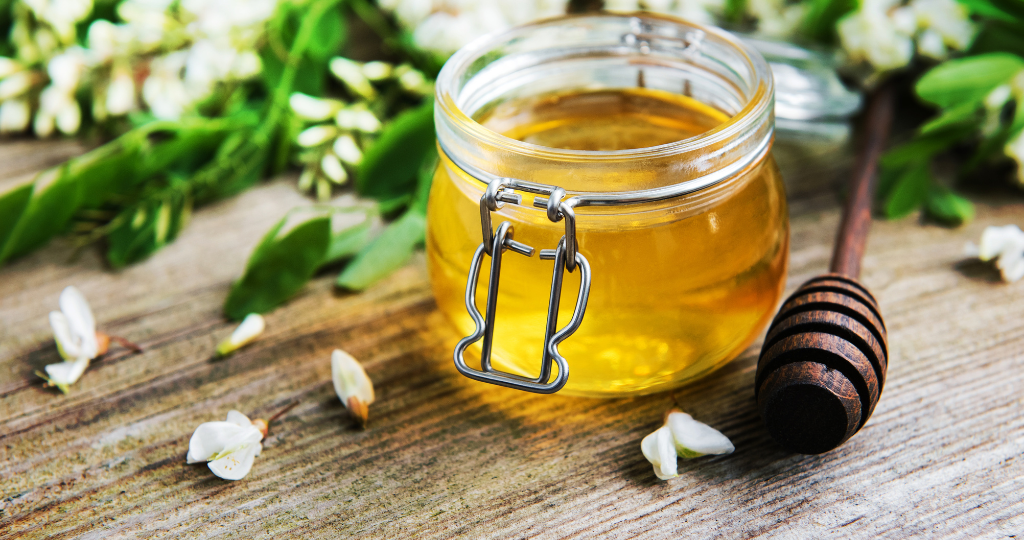
Choosing the Best Natural Sweetener: Agave, Honey, or Maple Syrup?
Agave, honey, and maple syrup - this sweet trio has stirred up quite the debate over which is the healthier choice to drizzle over your morning pancakes or bake into your homemade granola bars. Though they can all enhance flavour and texture in recipes, they have distinct differences when it comes to origins, nutritional benefits, flavour profiles, and even environmental impact.
This article uncovers the unique characteristics of agave, honey, and maple syrup, from how they are produced to their composition and suggested uses. We'll also compare agave vs honey vs maple syrup across crucial factors, helping uncover the winner as the best option for different diet needs and sustainability goals. By the end, you'll have the lowdown on choosing the right syrup for your needs from this tasty trifecta.
How is agave made?
Agave is a natural sweetener produced from the juice of certain agave plants, especially the Blue Weber Agave. To make agave nectar, the sap is extracted from the agave pina, the plant's core, and then filtered and heated to break it down into its liquid sugars. The end result is a smooth, mildly sweet syrup, slightly thinner than honey. With its more subtle flavour, agave blends well into drinks and recipes without overpowering other ingredients. Its versatility and promotion as a "health food" have boosted agave's popularity recently.
Characteristics of agave
- Agave syrup has a thin, runny consistency similar to maple syrup. But it's slightly less dense.
- It has a neutral, mild flavour, slightly sweeter than sugar or honey. The flavour is more floral and fruity than maple syrup's darker, richer notes.
- The base agave nectar is light in colour, ranging from transparent to light golden or light amber hues.
- It dissolves quickly and easily in liquids due to its high fructose content. This makes it a convenient sweetener for beverages.
Benefits of agave
- Low Glycemic Index: It has a lower glycemic index compared to regular table sugar. This means it doesn't cause spikes in blood sugar levels, making it a better option for people with diabetes.
- Rich in Antioxidants: It contains a variety of antioxidants which can help protect your cells from damage caused by free radicals.
- May Improve Digestive Health: It contains fructans, which are a type of fibre that can act as a prebiotic. This means they help feed the good bacteria in your gut.
- Antimicrobial Properties: Agave honey has been shown to have antimicrobial effects, meaning it can help fight against certain bacteria, fungi, and viruses.
- Versatile Sweetener: Agave honey can be used as a natural sweetener in various foods and drinks, from baked goods to beverages.

Things to consider when buying agave
- Opt for 100% pure, raw, or organic agave with no fillers or additives.
- Select darker amber colours for bolder, complex maple-like flavours. Lighter syrups have simpler notes.
- Check the source and brand for quality, ethical harvesting, and sustainably produced agave.
- Understanding certifications like USDA Organic, non-GMO, Gluten-Free, Fair Trade, etc.
How is honey made?
Honey is made by honey bees collecting nectar from flower blossoms. Back at the hive, worker bees repeatedly consume, digest and regurgitate the nectar, enriching it with special stomach enzymes. When sufficiently concentrated with sugars, the bees fan and dehydrate the honey into wax comb cells, capping them with wax for curing and storage as food for the colony.
To obtain honey for human use, beekeepers harvest the wax frames and extract the ripe honey by crushing or spinning out the liquid gold inside without harming the bees. It's a remarkable process that transforms simple floral nectars into thick, sweet, golden elixir through secretions from tiny buzzing bellies. For those exploring natural sweeteners, the choice between Agave vs Honey vs Maple Syrup depends on dietary preferences and restrictions.
Characteristics of honey
- Honey can range from nearly colourless to dark brown, depending on the floral source and processing.
- It has a smooth, thick consistency that is typically easy to pour. Some kinds of honey crystallise faster than others.
- Flavour profiles vary widely, from mild, delicate, and sweet to rich, bold, and complex.
- It can range from fresh floral notes to warm, earthy, spicy or nutty smells.
- Raw honey provides small amounts of vitamins, minerals, amino acids and antioxidants. Processed honey has lower nutritional value.
Benefits of honey
- Nutrition: Honey is a natural source of carbohydrates, which provide energy. It also contains small amounts of vitamins and minerals like vitamin C, iron, and calcium.
- Wound Healing: Honey has natural antibacterial and anti-inflammatory properties that can help promote wound healing.
- Cough and Throat Relief: Honey coats and soothes the throat, making it an effective natural remedy for coughs and sore throats.
- Digestive Health: Honey contains prebiotics, which are types of fibre that feed the good bacteria in your gut. This can help improve digestion and gut health.
- Skin and Hair Benefits: When applied topically, honey can moisturise and nourish the skin and hair due to its humectant and emollient properties.
Things to consider when buying honey
- Raw, unpasteurised honey has more nutrients and enzymes but a shorter shelf life.
- Unfiltered honey contains more pollen and fine particles, which may cause crystallisation.
- Monofloral comes predominantly from one flower type rather than a mix.
- A higher grade means honey is cleaner, smoother, and more carefully filtered.
- Organic certification ensures environmentally sustainable, chemical-free beekeeping practices.
How is maple syrup made?
Crafting maple syrup takes patience and care to transform maple tree sap into liquid gold. First, sugar maple trees are tapped early in the year to draw out their nutrient-rich sap. Then, the watery sap is boiled, allowing water to evaporate until the naturally sweet maple syrup reaches the desired thickness and maple flavour. It's a time-honoured tradition that relies on nature's bounty and generations of maple-making wisdom.

Characteristics of maple syrup
- Maple syrup comes in different grades based on colour, ranging from light golden to dark amber. The colour indicates flavour and intensity.
- Maple flavour profiles span from delicate and vanilla-like in lighter syrups to richer, more caramelised in darker varieties.
- Pure maple syrup has a smooth, silky mouthfeel. It should pour easily and feel viscous, not watery.
- True maple syrup comes straight from maple sap and nothing else. No artificial flavours or colouring should be added.
- Grades are based on colour and time of harvest. Fancy or Grade A Dark Colour is the richest flavour.
Benefits of maple syrup
- Natural Sweetener: Maple syrup is a natural sweetener made from the sap of maple trees. It's a healthier alternative to refined sugar.
- Nutrient-Rich: Maple syrup contains small amounts of various vitamins and minerals. This makes it more nutritious than regular sugar.
- Antioxidant Properties: Maple syrup is rich in antioxidants called polyphenols. These help neutralise harmful free radicals and may reduce the risk of certain diseases.
- Skin Benefits: When applied topically, maple syrup may help moisturise and nourish the skin due to its antioxidant and antimicrobial properties.
- Versatile Flavour: Maple syrup has a unique, sweet and slightly nutty flavour that can add a delicious taste to various foods and beverages.
Things to consider when buying maple syrup
- The grade affects flavour intensity. Consider your taste preferences and how you plan to use it.
- Purchase maple syrup produced in maple-rich regions in the northeastern US or southeastern Canada.
- As a general rule, lighter-coloured syrups have a more delicate flavour.
- Look for purity certifications from state maple associations and 'Grade A' labelling.
- While pure maple syrup is more expensive than commercial sweeteners, remember you are paying for quality artisanal craftsmanship.
Comparison between agave vs honey vs maple syrup
|
Basis of Difference |
Agave |
Honey |
Maple Syrup |
|
Caloric Content |
Low calorie but high in fructose |
Moderate calories (approx. 64 cal/tbsp) |
Moderate to high, varies with purity. |
|
Flavour Profile |
Mild, neutral sweetness |
Rich, varies with the flora |
rich with caramel and vanilla notes. |
|
Culinary Uses |
Versatile is used in beverages and baking due to its neutral flavour. |
Baking, cooking and teas |
Famous for breakfast dishes like pancakes and waffles |
|
Environmental Impact |
Sustainable production |
Beneficial for pollination |
Sustainable |
|
Benefits |
Low glycemic index |
Antibacterial |
May have a lower glycemic index |
Conclusion
While all three sweeteners make favourable sugar substitutes because of antioxidants, antimicrobial benefits, and relatively low glycemic impact, raw organic honey emerges as the ultimate winner. With uniquely anti-inflammatory, wound-healing properties that agave and maple syrup lack, medicinal superiority completes honey’s value.
As an unprocessed nectar with a glowing amber colour indicating high antioxidant retention and diverse phytonutrient profile, raw honey satisfies both palate and health priorities as nature’s most wholesome sweetener. It earns gold as the tastiest therapeutic touch-enhancing drinks and dishes.





